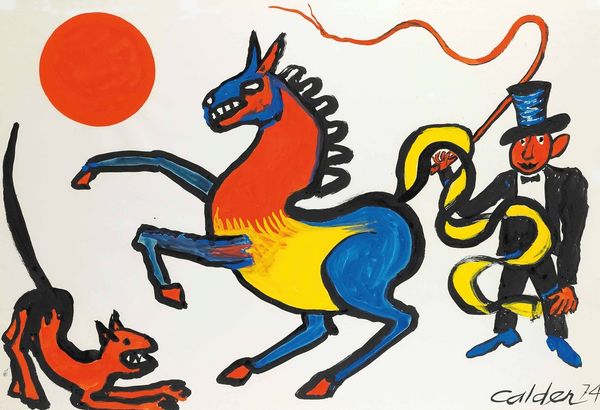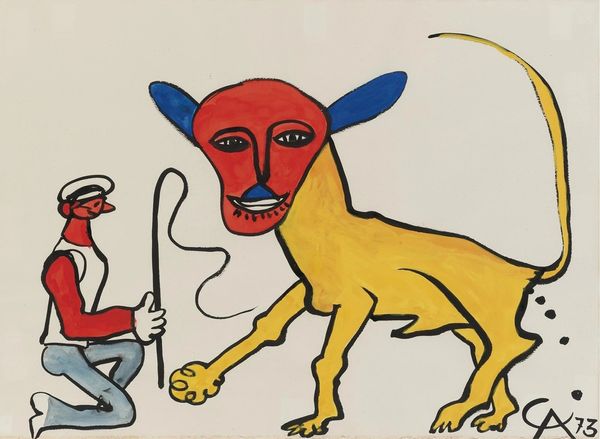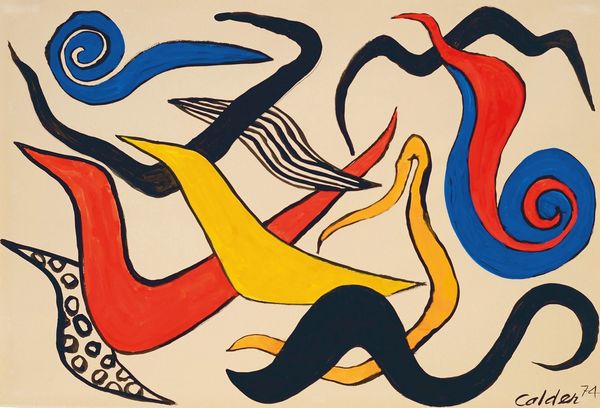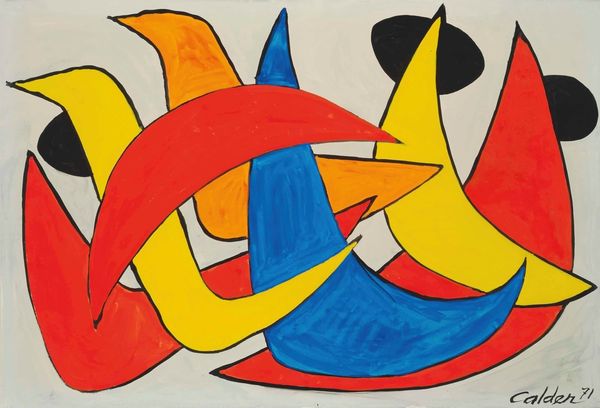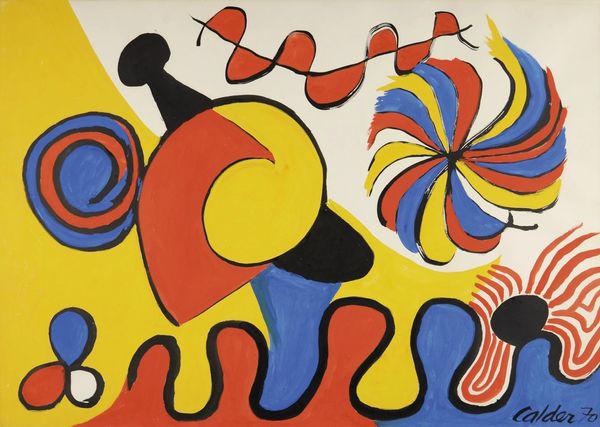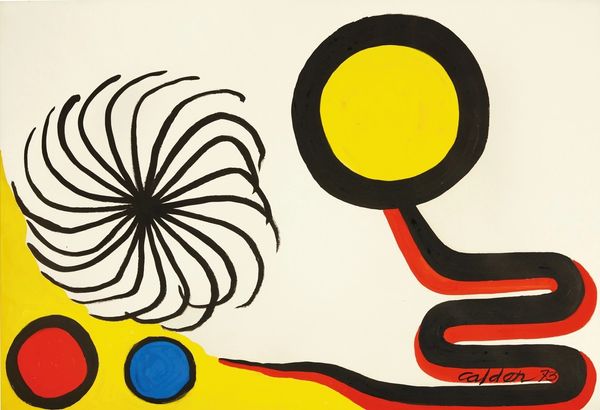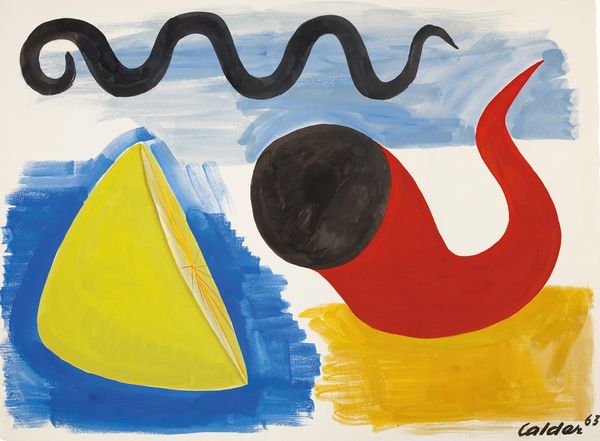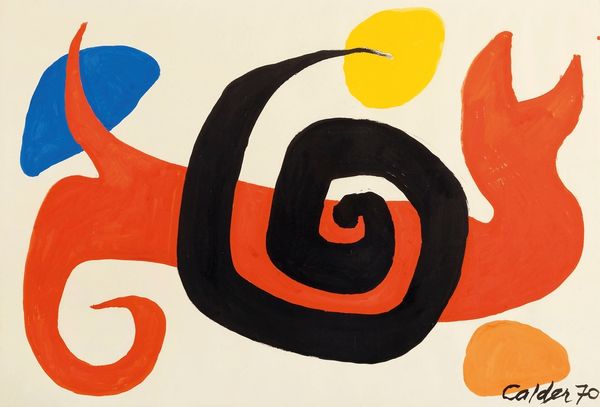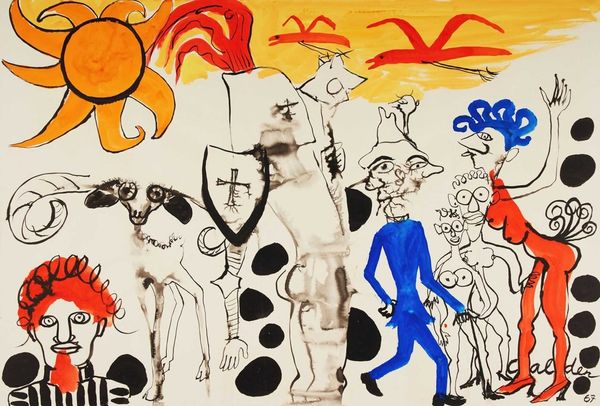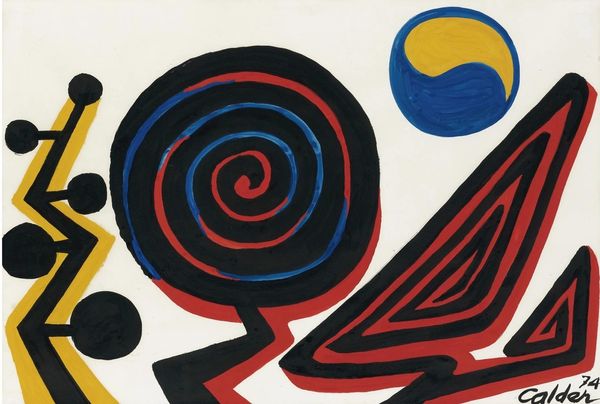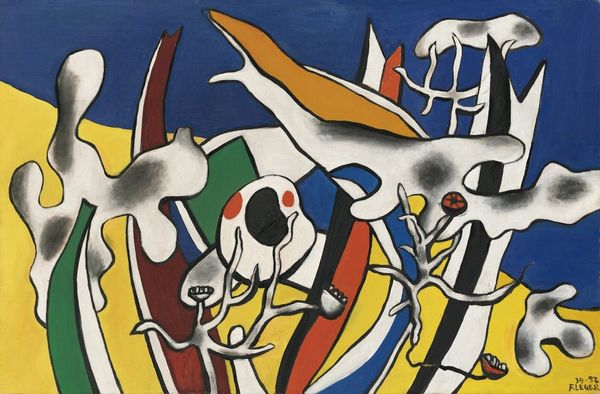
Copyright: Modern Artists: Artvee
Editor: This is Alexander Calder’s "Yellow Cattle" from 1973, an acrylic painting that immediately strikes me as playful. The colors are bold and the shapes are simplified to almost cartoonish levels. What do you see in this piece, especially concerning its symbolism? Curator: It's fascinating how Calder distills the bull—an age-old symbol of power and virility—into these almost childlike forms. Consider the colors themselves; the vibrant yellow contrasts starkly with the black, which creates an immediate visual tension. Does this juxtaposition, perhaps, represent conflicting aspects of the bull's nature, its creative and destructive forces? What do you make of the abstract, coiled form beside it? Editor: I hadn't really thought about it as destructive! The coiled form… is that its tail? Or, could it be something more abstract – a representation of the bull's energy or perhaps its DNA? Curator: Perhaps! Note how that spiral, a form found across cultures to represent growth and evolution, here uses a restricted palette. Think of the labyrinth, another spiral form strongly connected to the Minotaur myth. Do you think Calder knowingly alludes to cultural memory, using recognizable images to express modern concepts? Editor: That’s such an interesting thought! It really shifts my perspective, thinking about ancient symbols being reworked here in a pop-art style. I was mostly seeing the surface, its lightness and simplicity, but now I realize how much depth there might be below it. Curator: Indeed, the simplicity may belie a complex web of associations, prompting us to reconsider how even seemingly basic forms can carry significant cultural and psychological weight. These images linger in the cultural memory.
Comments
No comments
Be the first to comment and join the conversation on the ultimate creative platform.

